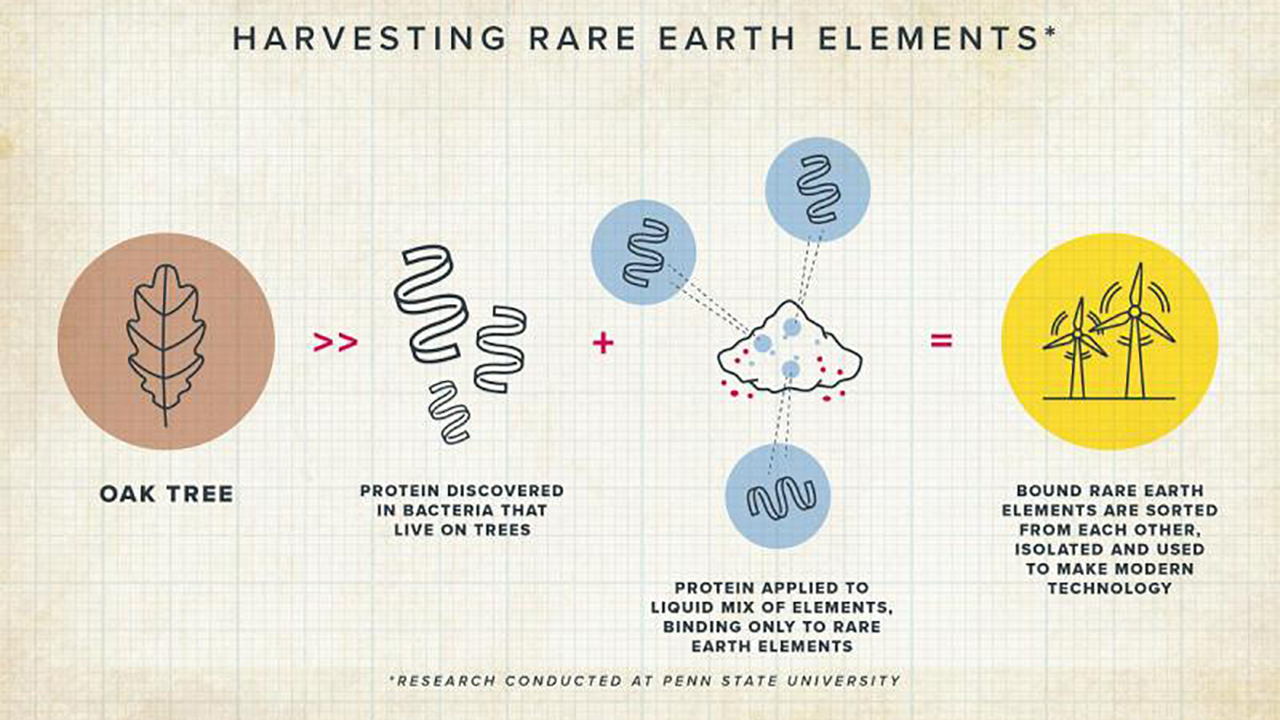NEWS | June 7, 2023
Green Rare Earths through Oak Bacteria?

Rare earth elements are situated next to each other in the periodic table. Similarly, they are also found in ores in associated forms. Before the industry can utilize these scarce resources, they need to be separated through complex and often environmentally damaging processes. Thanks to a protein developed by a research group at Pennsylvania State University (Penn State), the separation process could soon become simpler and more environmentally friendly.
The researchers discovered a special protein in the bacteria living on oak buds called Hansschlegelia quercus, which metabolizes rare earth elements. This protein, named Lanmodulin, distinguishes between light and heavy rare earth elements. While it forms a strong bond with light elements like neodymium oxide, it reacts only weakly to heavy elements like dysprosium oxide. The significant differences in binding strength are due to the varying sizes of the respective metal atoms. When a solution of metals flows over anchored Lanmodulins, the different elements are held back to varying degrees and move at different speeds.
The researchers at Penn State have patented their discovery. Currently, they can only separate light and heavy rare earth elements. However, they plan to eventually separate adjacent elements in the periodic table as well. Once the technology is mature, it could make many American and European mining projects profitable. This would not only be a significant step towards reducing dependence on China but also towards producing environmentally-friendly rare earth elements.
While it may take some time before this becomes a reality, investors do not need to forego rare earth elements in the meantime. Investing in them promises attractive returns considering the anticipated price increases.